Understanding Adoption Success Rates and Challenges for Cats

One of the greatest joys in life may well be adopting a cat.
Whether you bring home a frisky little kitten or provide a loving environment for a senior cat, giving a forever home to a feline is pure bliss.
However, it’s important to understand key factors that influence adoption success rates in order for both you and your new furry friend to be happy and comfortable.
This article will explore the challenges and strategies that can improve adoption success rates, helping you make informed decisions when it comes to adopting a cat.
Table of Contents
What Factors Affect Cat Adoption Success Rates?
In the process of adopting a cat, several factors come into play that will determine how smoothly the transition goes.
These oft-overlooked factors greatly influence the long-term happiness of both the feline and the adopter.

Age and Breed Considerations
Age and breed are key factors in cat adoption success.
While kittens are highly in demand because of their cuteness and playfulness, adopting an adult or senior cat offers several advantages.
Adult cats often have defined personalities, making it easier for the adopter to know what to expect.
Senior cats, often overlooked, can provide loving, low-energy companionship.
Breed also plays a role.
Some cat breeds, such as Siamese or Maine Coons, are known for being vocal and highly social.
They may or may not fit well into the lifestyle of the adopter.
Researching the breed can help in making a more informed decision and in finding a cat whose needs align with your family’s lifestyle.
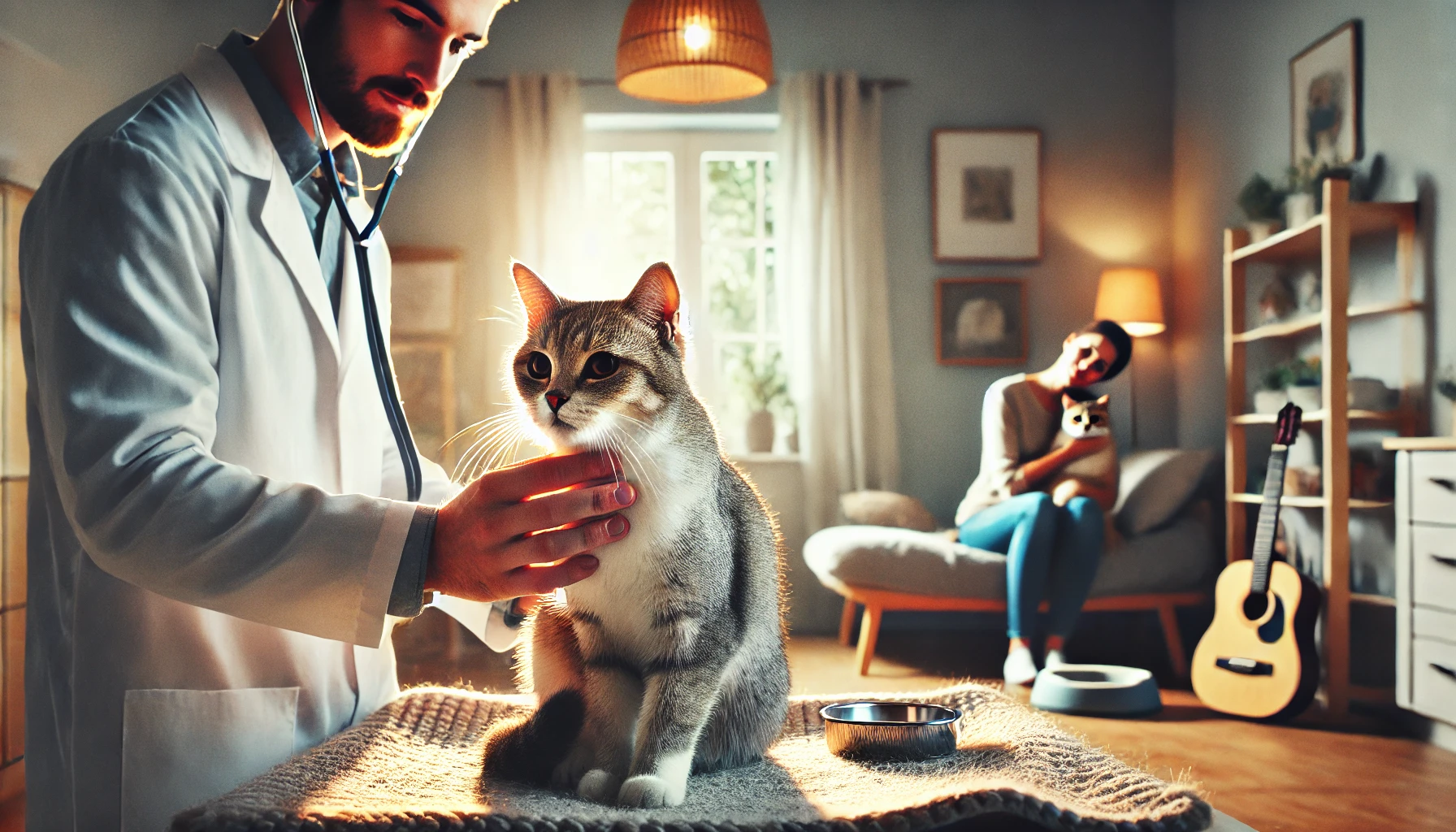
Health and Temperament
Health issues and temperament are crucial when considering a cat for adoption.
Cats with health problems often require more time, effort, and financial resources.
Additionally, temperament matters a great deal.
A cat with behavioral issues or anxiety may need special training or extra attention.
- Assess whether the cat’s personality will match your household’s energy level.
- Discuss any health concerns with the shelter or rescue group to understand what care the cat will need.
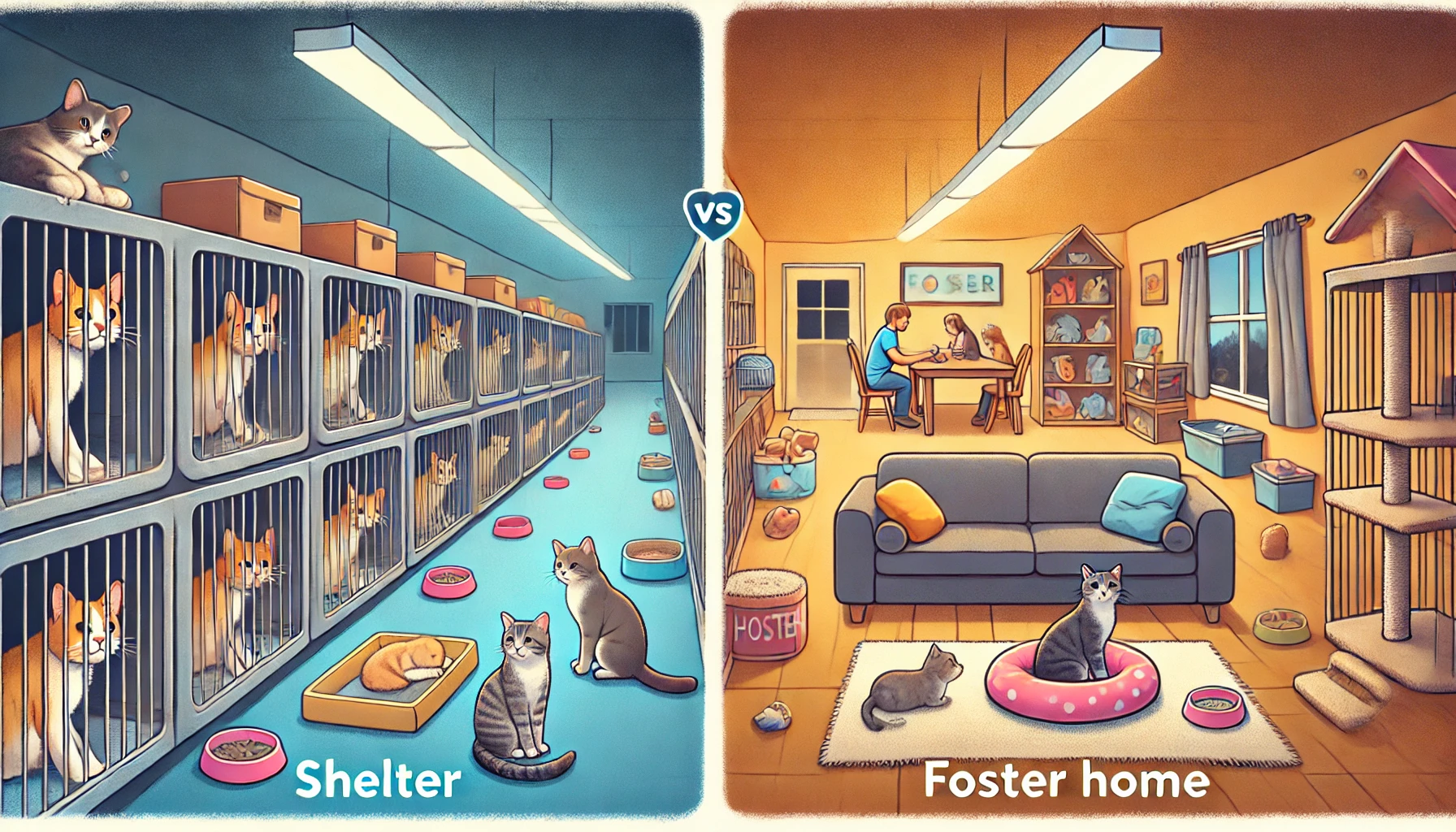
Shelter vs. Foster Care Systems
The environment from which you adopt your cat can impact the success of the adoption.
Cats from shelters may have had less human interaction and could require more socialization, whereas foster cats are often accustomed to living in a home environment and may adjust more easily to their new surroundings.
It’s important to consider the cat’s background and whether you’re prepared for any extra work that might come with adopting from a shelter.

Adopter’s Experience and Expectations
Your experience with pets and your expectations regarding the adoption process can significantly affect the success of the adoption.
First-time adopters may not fully realize the responsibility involved, while experienced cat owners are generally more familiar with what to expect.
Having realistic expectations and knowing what you’re getting into will help ensure a positive outcome for both you and the cat.
- Are you prepared for the long-term commitment of adopting a cat?
- Do you have experience with pet care, or are you willing to learn?
- How much time can you dedicate to the cat’s socialization and well-being?
Several factors determine how smoothly a cat adoption goes, including age, breed, health, and the experience of the adopter. Understanding these can help improve the chances of a successful adoption.

Common Challenges Faced During Cat Adoption
Adopting a cat can be quite rewarding, but it does not always come without its challenges.
Preparing for these difficulties can increase the adoption success rate, as both you and your new pet can adapt more smoothly to the transition.

Behavioral Changes When Cats Enter New Homes
Cats can take time to adjust to a new home, especially if they come from a shelter or have had traumatic experiences.
They may be shy, afraid, or exhibit avoidant behaviors like hiding or becoming territorial.
Many adopted cats may not feel entirely comfortable for several weeks, or even months.
- Provide your cat with a quiet, secure spot where it can gradually become accustomed to its new environment.
- Offer enrichment activities such as toys, scratching posts, and window perches.
- Be patient and allow them to explore at their own pace.

Pre-existing Health Issues
Many shelter and rescue cats have pre-existing medical conditions that may require ongoing treatment.
These can range from serious conditions like diabetes or kidney disease to minor issues such as dental problems.
It’s important to consider that these health issues may not always be apparent, and additional vet visits and treatments could become part of your responsibility as the adopter.
- Request a thorough health history from the shelter or rescue organization before adoption.
- Ensure you can afford any ongoing veterinary care the cat may require.
- Consider researching pet insurance or setting aside a budget for unexpected medical needs.

Socialization Issues with Rescued Cats
Rescued cats, particularly those from the streets or who had neglectful owners, often struggle with socialization.
They may be wary of people, other animals, or even new objects in the home.
It’s important to let your cat take as much time as needed to get comfortable with their new environment.
- Positive reinforcement: Offer treats and use soft, encouraging tones to build their confidence.
- Caution: Avoid forcing interaction; let the cat come to you when they feel ready.
- If your cat displays extreme fear or aggression, consider consulting a professional animal behaviorist.

Miscommunication Between Adopter and Shelter
Sometimes, there can be a gap in communication between the shelter and the adopter regarding the cat’s needs, personality, or medical history.
This can lead to frustration if an adopter feels unprepared for certain challenges after bringing the cat home.
Clear communication with the shelter before adoption can help avoid misunderstandings.
- Ask as many questions as possible about the cat’s behavior, history, and any special needs it may have.
- Request written records of any vaccinations or medical treatments the cat has received.
- Be honest about your household environment and lifestyle to ensure the cat is a good fit.
The common challenges faced during cat adoption include communication barriers, identifying individual cats, uncertainty about their history, addressing special needs, uncovering hidden personalities, adapting to new scents, and managing accidents on trips home.
By understanding and preparing for these challenges, adopters can set themselves up for a smoother transition and a higher chance of adoption success.
Adopting a cat can be rewarding, but expect challenges like behavioral changes, pre-existing health issues, and socialization problems. Prepare ahead to increase success rates.

Tips for Ensuring Cat Adoption Success
Adopting a cat is a significant commitment that requires careful planning and preparation.
There are many factors that contribute to the success of a cat adoption, and the cat’s previous experiences can greatly affect how well they settle into your home.
You can improve the adoption success rate by ensuring a smooth transition with some practical tips for both you and your new feline friend.

Setting Up Your Home for Your New Cat
Before bringing your adopted cat home, you need to ensure that the environment is comfortable and safe for them.
Cats are creatures of habit, and an immediate change in surroundings can be stressful.
Preparing your home for the new cat can help reduce stress and make them feel welcome.
- Set up a quiet area where your cat can retreat when feeling overwhelmed.
- Provide essentials like food, water, a litter box, scratching posts, and a comfortable bed.
- Keep your cat away from potential hazards such as toxic plants, loose wires, or small objects that could be swallowed.
- Consider using calming sprays or pheromones to help the cat feel relaxed during the initial days.

Introducing Your Cat to Other Pets
If you already have pets, introducing your new cat to them will require patience and care.
Cats are territorial animals, and sudden introductions can result in stress or even aggressive behavior.
A gradual introduction process is key to achieving peaceful coexistence.
- Keep the new cat in a separate room for a few days, allowing pets to get used to each other’s scent.
- Use a baby gate or a cracked door for initial visual introductions before allowing direct contact.
- Supervise all interactions to prevent any negative encounters.
- Reward both pets with treats and praise to associate positive experiences with one another.

Building Trust with Your Adopted Cat
Building trust is a major part of establishing a good relationship with your adopted cat.
The new cat may take time to settle in, especially if they have experienced trauma in the past.
Patience and gentle interaction are key to gaining their trust.
- Allow the cat to come to you at their own pace; avoid forcing interactions.
- Speak softly and reassuringly, and offer gentle petting for comfort.
- Reward calm, social behavior with treats and positive reinforcement.
- Respect the cat’s personal space and avoid overstimulation.

Understanding Your Cat’s Behavior and Body Language
Learning your cat’s body language is essential to understanding their needs and mood.
Cats communicate through subtle signs, and being attuned to these will help you respond to their needs accordingly.
- A cat’s tail can reflect their mood—upright means content, while tucked between legs suggests fear or discomfort.
- Purring usually denotes happiness but can also indicate that the cat needs comfort if they are stressed.
- Pay attention to ear position—ears forward indicate curiosity, while ears flat against the head signal anger or fear.
- Slow blinking at your cat can be a way to communicate trust and affection.

Providing Proper Nutrition and Care
A balanced diet and good care are essential to ensuring that your cat lives a long, healthy life.
Understanding your adopted cat’s dietary needs and providing proper care will help them stay happy and healthy.
- Consult a veterinarian to determine the best high-quality cat food suitable for the cat’s size, age, and health needs.
- Ensure fresh, clean water is available at all times.
- Schedule regular vet checkups to stay ahead of any potential health issues.
- Keep your cat’s litter box clean and hygienic to prevent infections or discomfort.
By following these tips, you set the stage for a successful adoption experience, giving your new feline companion the best chance to thrive in their forever home with you.
Follow practical steps like preparing your home, introducing pets gradually, and understanding your cat’s behavior to ensure a smoother transition for your new cat.

Adoption Trends: How Success Rates Are Changing
Society, technology, and even global events have influenced the trends in cat adoptions, which have evolved over the years.
Understanding these trends can help adopters, shelters, and rescue organizations improve adoption success rates and better address the needs of cats and their new families.
Let’s explore the shifting dynamics in cat adoption success rates and what might be contributing to these changes.

Social Media and Cat Adoptions
Social media has been instrumental in increasing cat adoption success rates.
Platforms like Instagram, Facebook, and TikTok have provided shelters and rescues with opportunities to highlight cats in ways that reach a larger audience.
Heartwarming stories, photos, and videos of cats seeking homes often go viral, leading to increased interest in adoption.
- Hashtags like #AdoptDontShop and #RescueCats have raised awareness about cat adoptions.
- Shelters use social media to share success stories, encouraging others to adopt.
- Real-time updates on cats allow potential adopters to follow their journey before adoption.

COVID-19 and the Rise of Pet Adoptions
The COVID-19 pandemic led to an unexpected rise in pet adoptions, including cats.
During lockdowns, many people sought companionship through pets, resulting in a significant increase in adoption rates.
Cats, known for being independent and adaptable to various living environments, were especially popular during isolation.
- Many shelters reported record numbers of cat adoptions during the pandemic.
- Working from home allowed people to better manage the initial adjustment period for a new pet.
- Some adopters faced challenges after returning to work, leading to a slight increase in post-pandemic returns.

Long-Term Trends in Cat Adoption Success
Cat adoption success rates have improved over the past decade.
This is largely due to increased awareness of animal welfare, better education for potential adopters, and improvements in shelter practices.
More people are now willing to adopt senior or special-needs cats, who were once difficult to place in homes.
- Many shelters now offer post-adoption support to ensure long-term success.
- Adoption campaigns focus on educating adopters about the specific needs of different types of cats.
- A growing trend in adopting cats with medical needs or behavioral issues is supported by better resources for new owners.
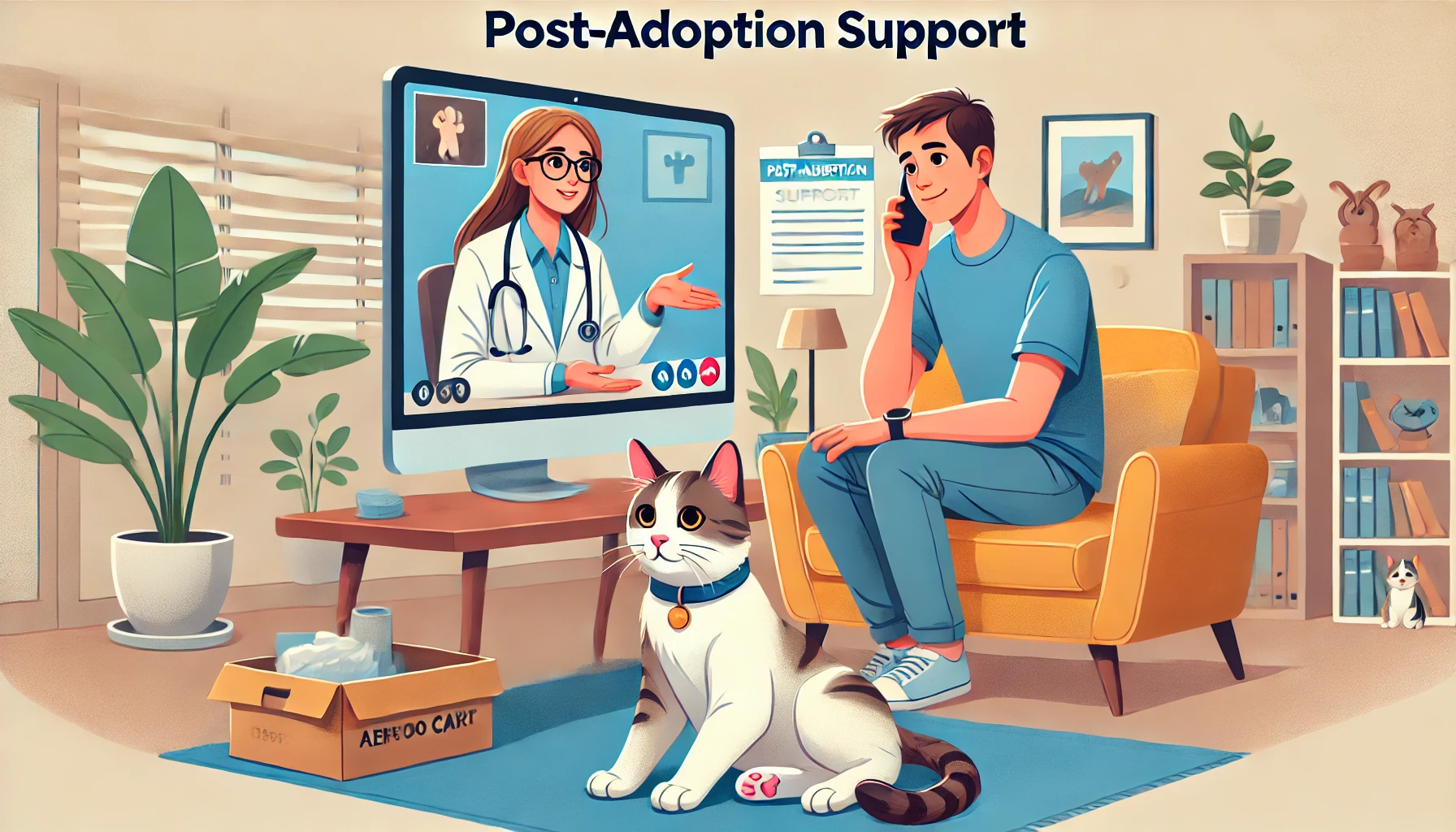
Importance of Post-Adoption Support
Post-adoption support has become a critical factor in improving cat adoption success rates.
Shelters and rescue organizations increasingly provide follow-up support to address any issues with the cat’s adjustment, health, or behavior.
This kind of support helps reduce the likelihood of returns and increases the chances of a successful, lifelong adoption.
- Post-adoption support can include behavioral advice, veterinary recommendations, and even emergency consultations.
- Shelters may offer educational resources and access to support groups for adopters.
- Post-adoption care has been proven to enhance long-term success for adopted cats.
With evolving technology, societal values, and post-adoption care, the future of cat adoptions continues to be shaped in ways that make it easier for both cats and their adopters to build lasting, successful bonds.
Social media and global events have significantly impacted cat adoption success rates. Staying informed of trends helps both adopters and shelters improve outcomes.

Supporting Cat Adoption: What Shelters and Rescues Can Do
Shelters and rescue organizations are the backbone of cat adoptions, and their success largely determines the outcomes of these adoptions.
These agencies provide the necessary resources, education, and care to both cats and adopters from pre-adoption through post-adoption.
By taking the proper steps, shelters can ensure that with every adoption, long-term success is more likely.
Here are some of the key ways shelters and rescues can best support cat adoptions and increase adoption success rates.
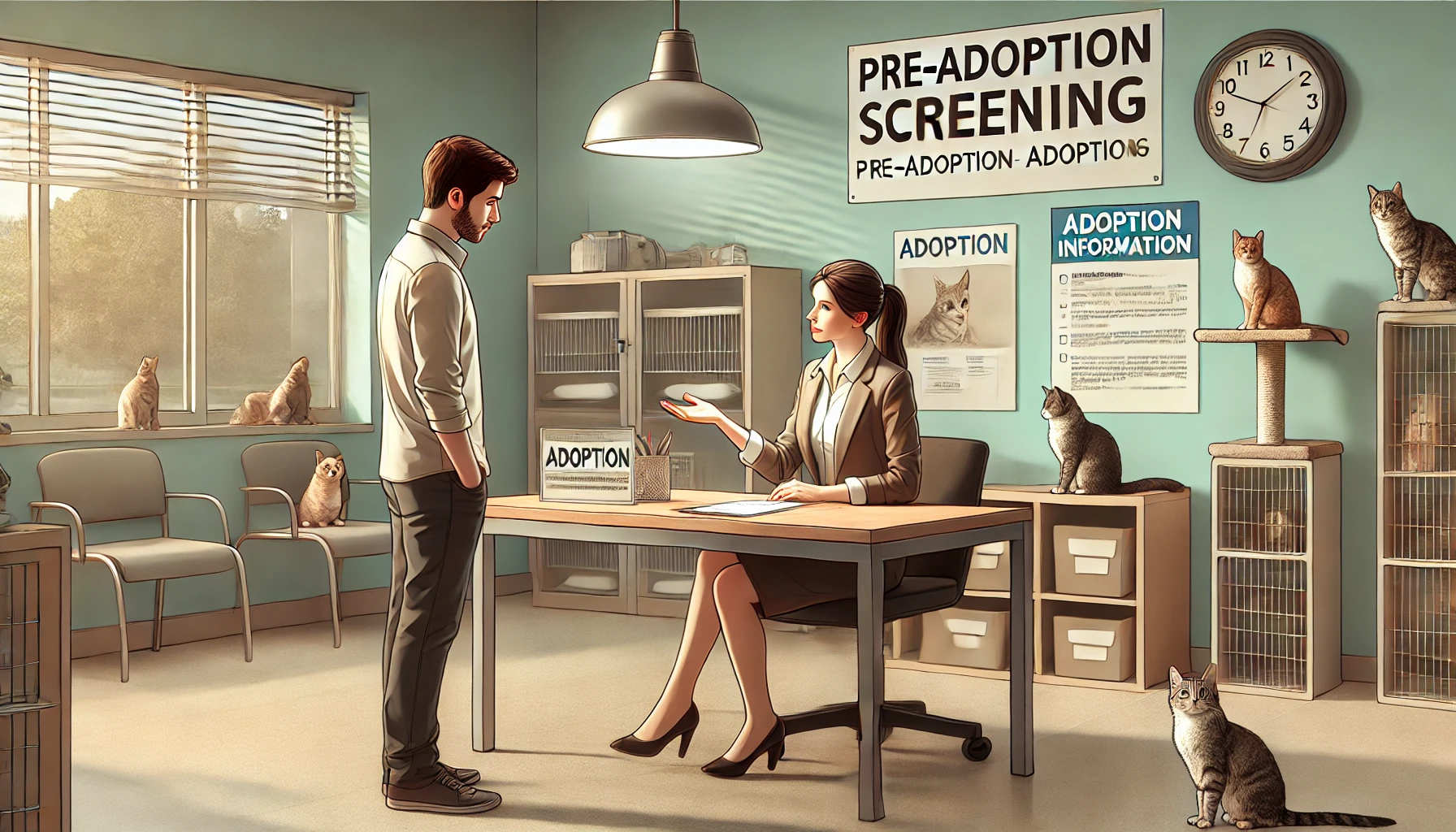
Effective Pre-Adoption Screening Processes
Pre-adoption screening ensures that potential adopters are fully aware of the responsibilities of caring for a cat and helps match cats with suitable homes.
A thorough screening process enhances the success rate of adoptions by aligning the cat’s needs with the lifestyle of the adopter.
- Screen applicants for adoption to assess if they are ready for the long-term commitment of caring for a cat.
- Discuss the cat’s special needs, health problems, behavioral issues, and required care with potential adopters.
- Evaluate whether the adopter’s home environment is suitable for the specific cat being considered.

Education and Resources for New Adopters
Successful adoptions often go hand in hand with education.
Many adopters may not be fully aware of the responsibilities that come with owning a cat, particularly in areas related to health, behavior, and nutrition.
Shelters should provide educational resources and guidance to prepare adopters for the challenges ahead.
- Offer educational materials on cat behavior, proper care, and health management.
- Help familiarize adopters with common issues such as litter box training, scratching, and diet.
- Provide an after-hours support hotline or online resource for adopters to ask questions after the adoption.

Building Strong Foster Care Networks
Foster care networks are vital to facilitating the adoption process.
Cats that spend time in foster homes often become better socialized and more prepared for life in a permanent home.
Foster families also provide valuable insights into the cat’s personality, behavior, and specific needs, helping to ensure a successful match.
- Recruit and train foster families to care for cats in home environments before adoption.
- Foster homes can provide cats with one-on-one attention that is often lacking in crowded shelters.
- Foster families help prepare the cat for adoption by offering critical insights into their behavior and personality.
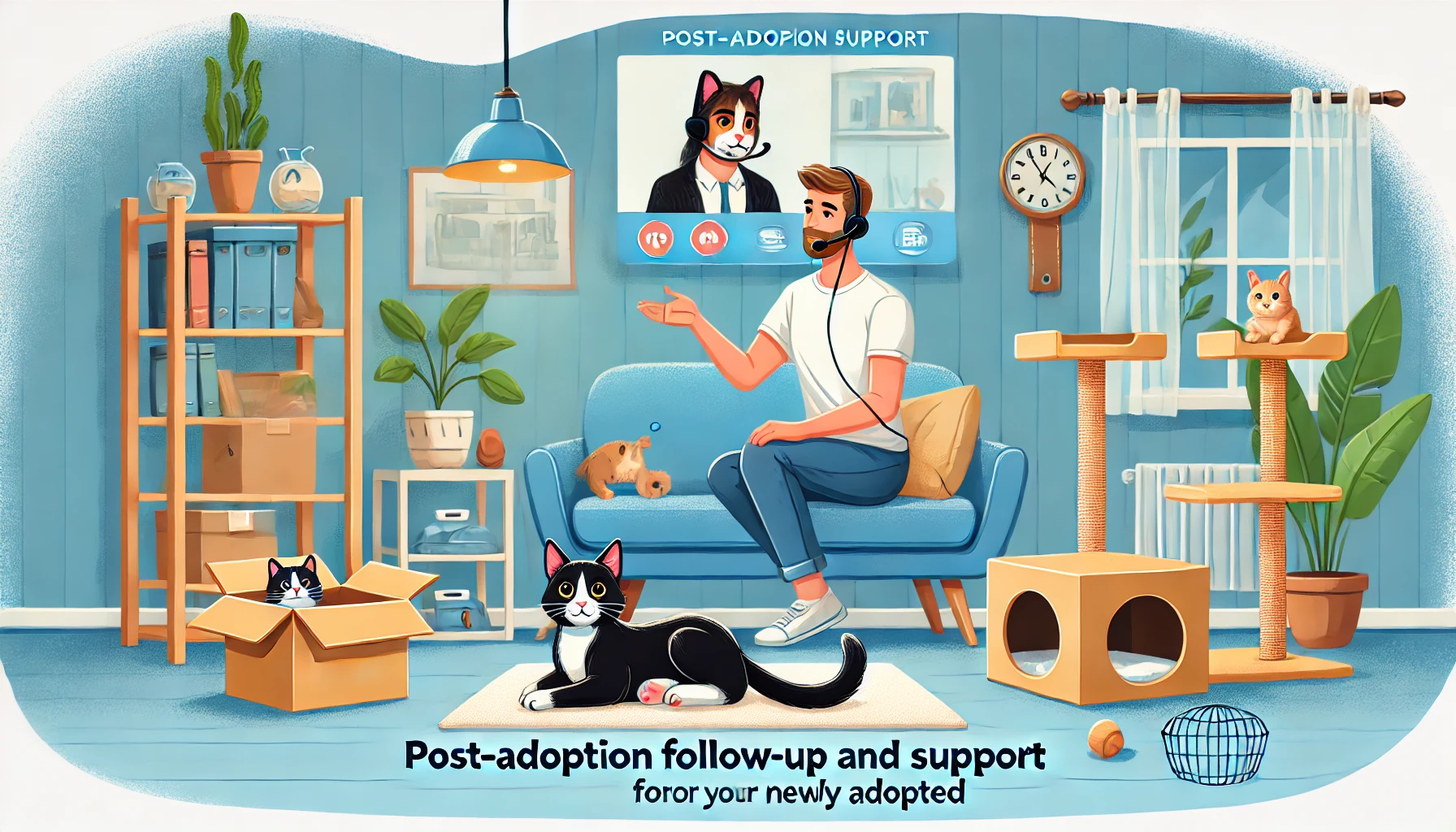
Post-Adoption Follow-up and Support Programs
Post-adoption follow-up is essential for ensuring the success of cat adoptions.
Shelters and rescues that offer follow-up programs can help adopters navigate any challenges they may face after bringing the cat home.
This could include behavioral guidance, veterinary referrals, or simply checking in to ensure the cat is adjusting well.
- Provide follow-up calls or emails to check on the cat’s progress after adoption.
- Offer resources for behavioral advice and veterinary referrals to address any concerns.
- Consider support groups or workshops where new adopters can share experiences and learn from others.
By focusing on these key areas, shelters and rescues can significantly improve the success rate of cat adoptions, ensuring happy, well-adjusted cats and their new families.
Shelters play a key role in cat adoption success, from screening adopters to providing post-adoption support. These efforts help ensure long-term adoption success.

Conclusion: Making Cat Adoption Work
Adopting a cat is more than just giving a pet a home; it is a lifetime commitment that requires foresight and preparation.
This article has discussed the major contributors to adoption success rates, challenges faced by adopters, and the critical role shelters and rescues play in ensuring a smooth and positive adoption experience.
By understanding these elements and taking the necessary steps, both adopters and organizations can achieve a successful, long-term adoption.

Preparing for a Successful Adoption
The success of a cat adoption begins well before bringing the cat home.
Being prepared, making your home ready, knowing how to introduce the cat to other pets, and building trust with your new feline companion will make the transition smoother and easier.
- Provide a safe, comfortable space where your cat can familiarize themselves at their own pace.
- Introduce other pets gradually to prevent stress and territorial behavior.
- Understanding your cat’s mood and body language is key to developing a strong bond.
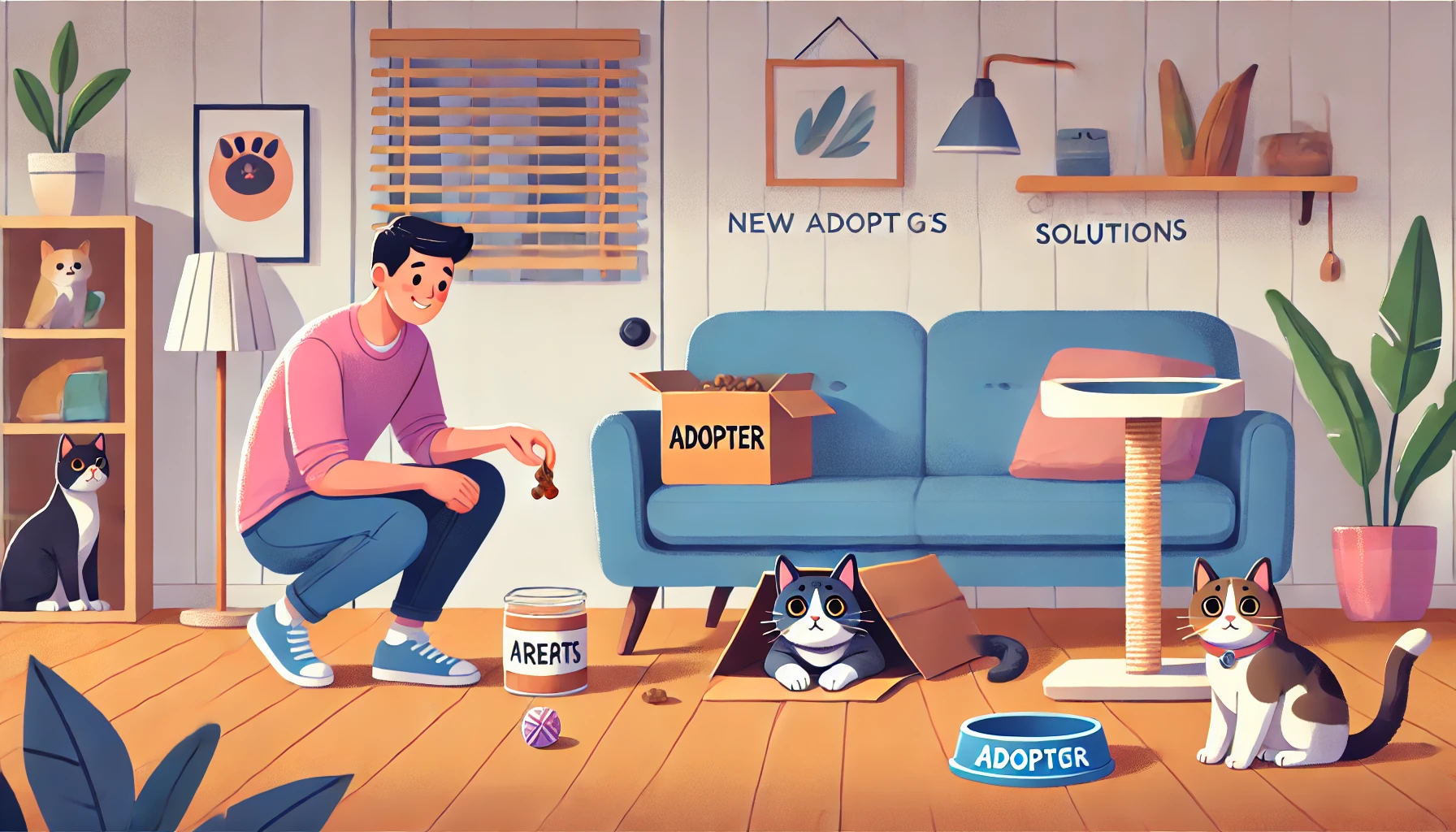
Common Challenges and Solutions
Adopters must also be prepared to deal with potential setbacks, such as behavioral adjustments, socialization problems, and pre-existing health conditions.
Addressing these issues early on helps avoid frustration and increases the likelihood of a successful adoption.
- Provide stimulating activities to help cats adjust to their new environment.
- Consult a veterinarian for health recommendations and ensure proper care.
- Allow your cat to come to you at their own pace to build trust.
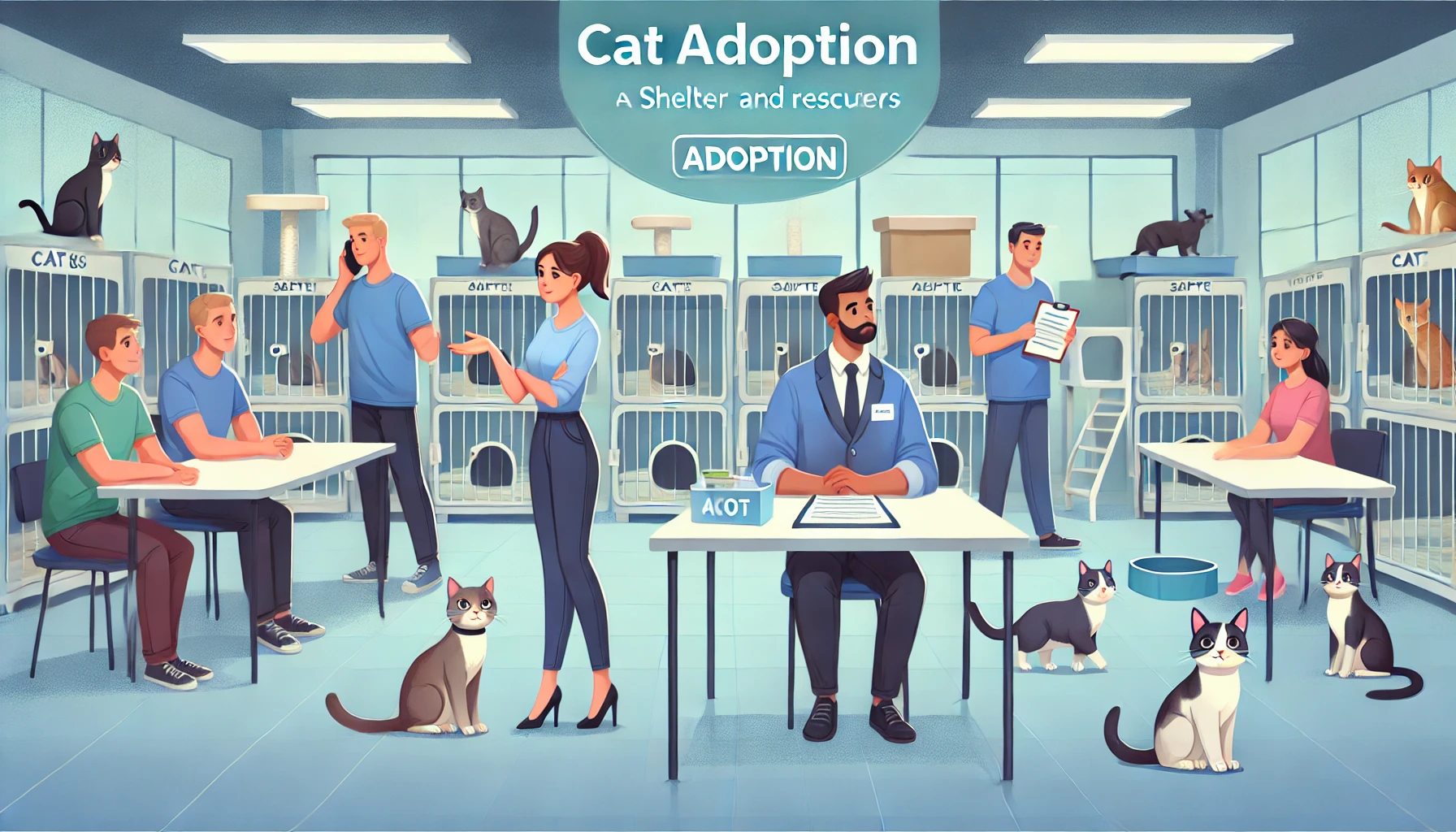
The Role of Shelters and Rescues in Adoption Success
Successful cat adoptions rely heavily on shelters and rescue organizations.
These organizations provide support throughout the process, from pre-adoption screening to post-adoption follow-up.
They also offer critical education, resources, and foster care networks to prepare adopters for their new responsibilities and ensure a better match for each cat.
- Screening ensures that prospective adopters are ready for the commitment of caring for a cat.
- Educational materials and post-adoption support give adopters the tools for success.
- Foster care networks help socialize cats and prepare them for permanent homes.

Moving Forward: Increasing Adoption Success Rates
Social media, global events, and the increasing focus on post-adoption support continue to shape cat adoption trends.
As shelters and adopters collaborate, the success rates of cat adoptions will only continue to grow in the coming years.
- Social media plays a crucial role in raising awareness about cat adoption and showcasing available cats.
- Post-adoption follow-up programs help mitigate problems and reduce returns.
- Education and continuous support are key to long-term success for both cats and adopters.
Ultimately, the success of cat adoptions is a joint responsibility of both adopters and shelters.
A smooth adoption process—supported by thorough preparation, knowledge, and continuous follow-up—ensures that more cats find loving, permanent homes.
As more attention is given to improving adoption success rates, the lives of both felines and their families will be enriched.
By understanding challenges, preparing properly, and utilizing shelter support, both adopters and organizations can achieve successful, long-term adoptions for cats.
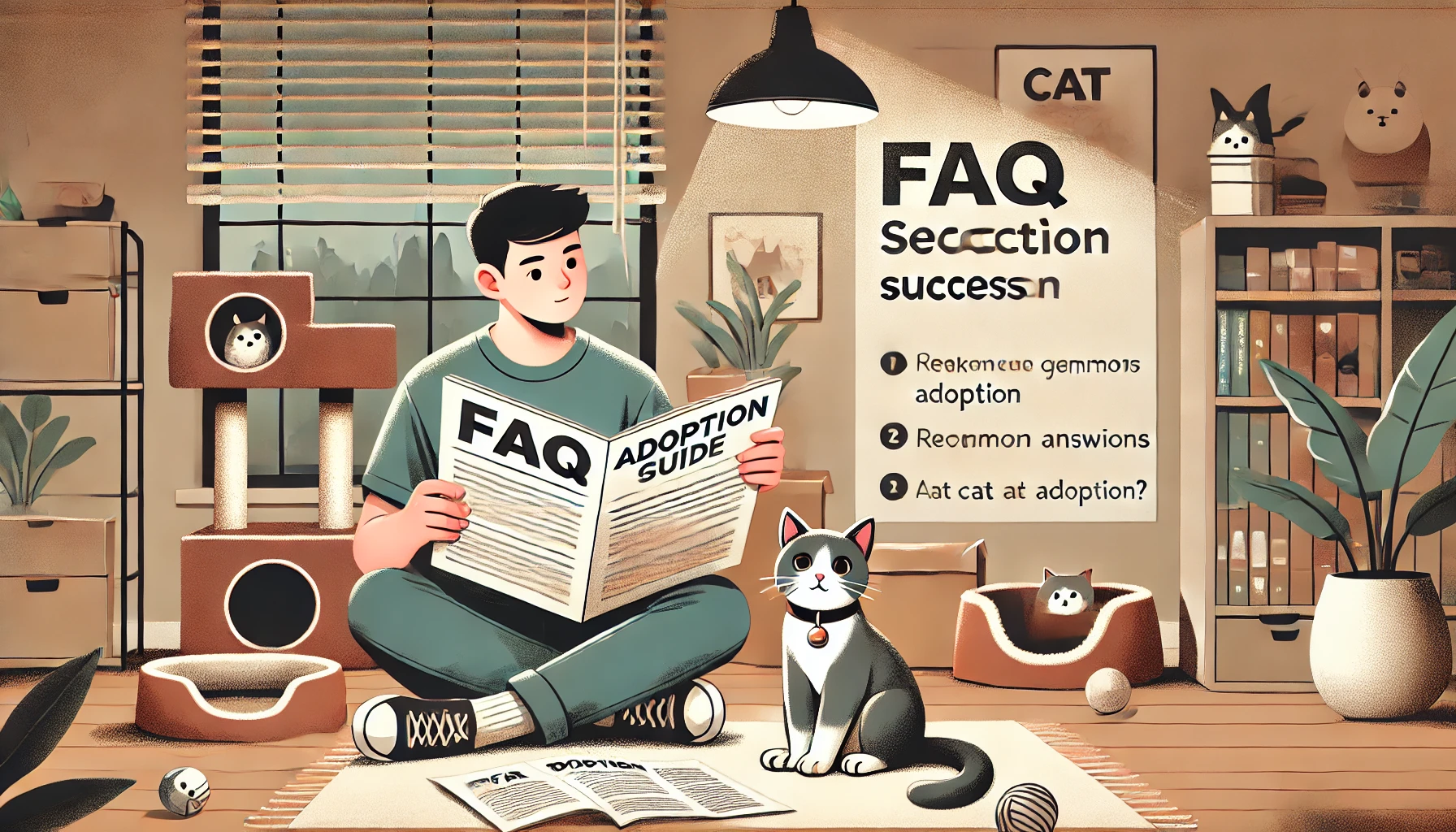
Cat Adoption Success: Frequently Asked Questions
Here are some typical questions and answers to help you better understand how to ensure a successful cat adoption, along with useful insights into the process and possible challenges.
How do I get my home ready for a new cat?
To prepare your home, set aside a quiet, safe space for your cat to adjust.
Ensure that food, water, and litter boxes are available.
Eliminate hazards such as poisonous plants, electrical cords, and small items that could be ingested.
How should I introduce my new cat to other pets?
Introduce your new cat slowly.
Keep them separated at first, allowing them to get used to each other’s smells before visual contact.
Gradually increase supervised interactions over days or weeks until all pets are comfortable.
How do I help my adopted cat settle into her new environment?
Give your adopted cat time and space to adjust.
Let them approach and explore at their own pace.
Calming scents or pheromones can help reduce anxiety.
Avoid forcing interaction until they are comfortable with you and their surroundings.
What do I need to know when adopting a senior or special needs cat?
Senior and special needs cats may require extra care, such as frequent vet visits, special diets, or medication.
However, they can be affectionate and low-maintenance companions, offering unique rewards for adopters ready to meet their needs.
How important is post-adoption support for a successful adoption?
Post-adoption support is essential for success.
It helps address behavioral, health, or socialization challenges.
Many shelters offer follow-up programs, behavioral guidance, and veterinary referrals to ensure long-term success for both the cat and the adopter.
What challenges can I expect during the cat adoption process?
Challenges during cat adoption may include behavioral adjustments, pre-existing health conditions, and socialization difficulties.
Understanding these potential issues can help adopters prepare for them, reducing frustration and increasing the chances of adoption success.
How do I bond with my newly adopted cat?
To bond with your adopted cat, be patient and gentle.
Let them approach you when they feel comfortable.
Use treats and toys to encourage interaction, and always create positive experiences to build trust and a strong relationship.





